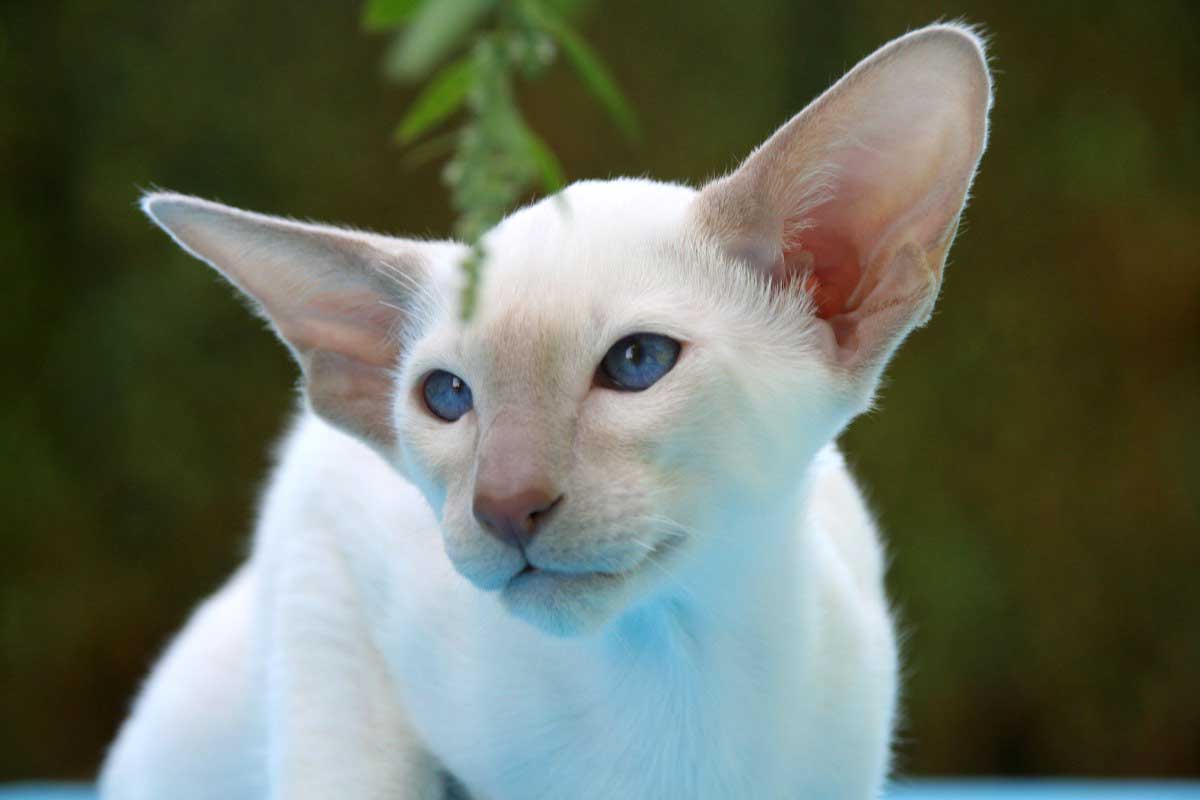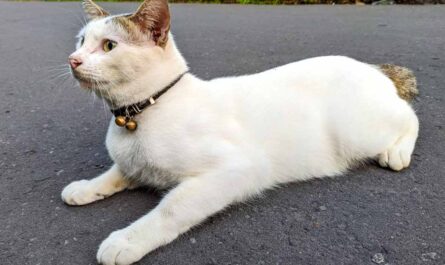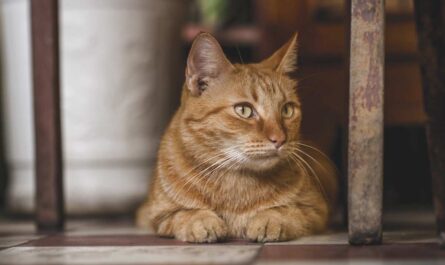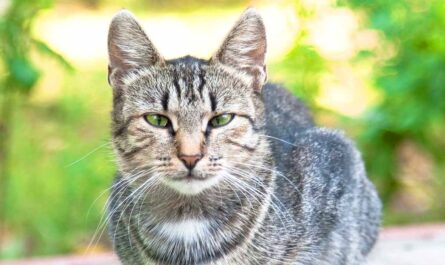We’ve all been there. You’re enjoying a relaxing evening, curled up on the couch with your feline friend purring contentedly beside you. Suddenly, a series of heaving coughs erupts, and there it is – a rather unpleasant surprise on the carpet. Cat vomit. It can be a cause for immediate concern, leaving you wondering, “What did they eat? Are they okay with your cat vomiting?
The truth is, feline vomiting isn’t always a cause for panic. Hairballs, a common culprit, are a natural part of a cat’s grooming routine. However, vomiting can also signal something more serious. This article aims to shed light on the various reasons cats vomit, the signs to watch out for, and the best course of action to ensure your furry companion’s health and well-being. Let’s dispel the myth that all cat vomiting is due to hairballs and delve deeper into the fascinating – and sometimes messy – world of feline digestion.
Demystifying Feline Physiology: Understanding the Digestive Journey
Imagine your cat’s digestive system as a remarkable assembly line. Food enters the mouth, where it’s crushed by sharp teeth and mixed with saliva to begin the breakdown process. This mixture then travels down the esophagus, a muscular tube, to the stomach. The stomach acts like a muscular churner, vigorously mixing food with digestive juices to further break it down. Once sufficiently broken down, the food slurry, now called chyme, moves on to the small intestine for nutrient absorption. Finally, any remaining waste products travel to the large intestine and are eliminated through the litter box.
The Hairball Enigma: Friend or Foe?
Cats are meticulous groomers, constantly using their rough tongues to remove loose fur. This ingested fur collects in the stomach, and usually, it passes harmlessly through the digestive system and exits in the litter box. However, sometimes, especially with long-haired cats, the fur clumps together, forming a hairball. Your cat will then vomit to expel this uncomfortable mass.
While occasional hairball expulsion is normal, excessive vomiting of hairballs can indicate underlying issues like digestive problems or excessive shedding. If you notice your cat vomiting hairballs more frequently, consult your veterinarian to rule out any medical conditions.
Vomiting vs. Regurgitation: Distinguishing the Upchucks
It’s important to differentiate between vomiting and regurgitation, as they have different causes. Vomiting is a forceful expulsion of stomach contents, often preceded by heaving, coughing, and abdominal discomfort. Regurgitation, on the other hand, is the passive return of undigested food shortly after eating. It usually happens without much effort and the material regurgitated often looks similar to what your cat just ate.
Understanding the difference between vomiting and regurgitation can help you identify the potential cause of your cat’s discomfort and take appropriate action. In the next section, we’ll explore the various reasons cats vomit and the signs that might indicate a visit to the veterinarian is necessary.
A Spectrum of Causes: Why Cats Vomit
Oh no! Did your feline friend just unleash a hairball surprise on your favorite rug? While vomiting can be a disconcerting sight for cat owners, it’s important to remember that it’s a natural reflex that can indicate a variety of issues. Understanding the potential causes of vomiting in cats empowers you to take the necessary steps to ensure your kitty’s well-being.
Dietary Indiscretion: A Feast Gone Wrong
Cats are curious creatures, and sometimes their curiosity leads them to explore beyond their kibble bowl. Ingesting inappropriate foods, like table scraps or houseplants, can irritate their stomachs and trigger vomiting. Foreign objects, like pieces of string or toys, can also cause gastrointestinal upset and lead to vomiting attempts as the body tries to expel the intruder.
Keeping a watchful eye on your cat and cat-proofing your home can help prevent dietary indiscretion. Avoid leaving out tempting human foods or toxic plants within your cat’s reach. Invest in safe and engaging cat toys to redirect their curiosity and keep them from swallowing anything they shouldn’t.
Infectious Diseases: Uninvited Guests Causing Upset
Just like humans, cats can fall victim to various viruses, bacteria, and parasites that can cause vomiting as part of a broader illness. These illnesses may also be accompanied by symptoms like diarrhea, lethargy, fever, or loss of appetite.
If you suspect your cat might have an infectious disease, seeking veterinary attention promptly is crucial. Your veterinarian can diagnose the specific cause and recommend the appropriate treatment plan to get your furry friend feeling better fast.
Inflammatory Bowel Disease (IBD): A Chronic Challenge
Inflammatory Bowel Disease (IBD) is a chronic condition that affects the digestive tract in cats. Symptoms of IBD can include vomiting, diarrhea, weight loss, and decreased appetite. The exact cause of IBD is unknown, but it’s thought to involve a combination of factors like genetics, dietary sensitivities, and gut bacteria imbalances.
Veterinarians often manage IBD through a combination of dietary modifications, medications, and stress reduction techniques. If you notice any signs of IBD in your cat, consulting your veterinarian is essential to establish a proper diagnosis and treatment plan.
Hairballs: A Feline Phenomenon Explained
Hairballs are a unique challenge faced by our furry companions. As cats groom themselves, they ingest loose fur. This fur can accumulate in their digestive system, forming a hairball. Hairballs often cause a distinctive hacking cough or vomiting episode as the cat tries to expel the furry mass.
Regular brushing can significantly reduce the amount of loose fur your cat ingests, minimizing the formation of hairballs. There are also hairball-control cat foods and treats that can help lubricate the digestive tract and facilitate the passage of hair.
It’s important to distinguish hairball vomiting from regular vomiting. Hairballs typically come up as a cylindrical mass of fur, while regular vomit might be food remnants or a liquid substance. If your cat is vomiting frequently and you don’t see hairballs, it’s best to consult your veterinarian to rule out other causes.
Metabolic Disorders: When Internal Systems Go Awry
Sometimes, vomiting can be a symptom of an underlying metabolic disorder in your cat. Conditions like kidney disease or diabetes can cause imbalances in the body’s chemistry, leading to nausea and vomiting.
Regular veterinary checkups are essential for the early detection of such issues. Veterinarians can perform diagnostic tests to identify metabolic disorders and recommend appropriate treatment plans to manage the underlying condition and alleviate vomiting symptoms.
Gastrointestinal Obstructions: A Serious Situation
If your cat experiences persistent vomiting, especially accompanied by abdominal pain, lethargy, and loss of appetite, it could be a sign of a gastrointestinal obstruction. Foreign objects like swallowed toys or bones can get lodged in the intestines, causing a blockage and preventing normal digestion.
Gastrointestinal obstructions are a serious medical emergency and require immediate veterinary attention. Early intervention is crucial to remove the blockage and prevent complications.
Cancer: Early Detection is Key
While less common, vomiting can also be a symptom of cancer in cats. Other signs to watch for include weight loss, lethargy, difficulty eating, and abnormal breathing.
If you notice any of these signs in your cat, seeking immediate veterinary care is essential. Early detection and treatment of cancer can significantly improve your cat’s prognosis.
Stress and Anxiety: When Emotions Take a Toll
Just like humans, cats can experience stress and anxiety, which can manifest in various ways, including vomiting. Common causes of feline stress include new pets in the household, loud noises, changes in routine, or travel.
Providing a calm and predictable environment is key to managing stress-induced vomiting in cats. Identify potential stressors and try to mitigate them.
Recognizing the Signs: When to Worry About Your Cat’s Vomiting
Seeing your cat expel a colorful rainbow (or, well, not exactly a rainbow) can be a cause for concern. While occasional vomiting might not be a huge deal, it’s important to be able to distinguish between minor tummy trouble and something more serious. Here’s what you should pay attention to:
How Much and How Often? Decoding the Frequency and Duration
One of the first things to consider is the frequency and duration of your cat’s vomiting episodes. Did your feline friend puke up a hairball once, and then seem perfectly fine? That’s likely nothing to worry about. But if your cat is vomiting repeatedly over a short period, or if vomiting episodes become a daily occurrence, it’s time to consult your veterinarian.
Decoding the Contents: What Came Up Must Come Down (…the Drain)
The contents of your cat’s vomit can offer valuable clues about the source of the problem. Here’s a quick breakdown:
- Hairballs: These furry clumps are a common sight for cat owners. If your cat coughs up a hairball occasionally, it’s usually nothing to worry about. However, frequent hairball expulsion might indicate excessive grooming or underlying digestive issues.
- Undigested Food: Did your cat’s entire breakfast reappear on the floor, looking relatively unchanged? This could suggest dietary indiscretion (your cat ate something they shouldn’t have) or a sensitivity to their current food.
- Bile: Yellow, foamy vomit might indicate an empty stomach or irritation in the digestive system.
- Blood: Seeing any blood in your cat’s vomit is a cause for concern and requires immediate veterinary attention.
- Parasites: In rare cases, you might see worms or other parasites in your cat’s vomit. This also warrants a trip to the vet.
Remember, this is not an exhaustive list, and the significance of the vomited matter can vary depending on other symptoms.
Beyond the Vomit: Accompanying Symptoms to Consider
While vomiting itself can be alarming, it’s the presence of other symptoms that can truly paint a clearer picture of what might be ailing your cat. Here are some red flags to watch out for:
- Lethargy: Is your usually energetic cat suddenly sluggish and uninterested in playtime? This lack of energy, combined with vomiting, could indicate a more serious issue.
- Diarrhea: Vomiting and diarrhea together can be signs of a viral or bacterial infection, dietary indiscretion, or even stress.
- Loss of Appetite: If your cat is not interested in food along with the vomiting, it could be a sign of dehydration or discomfort.
- Straining in the Litter Box: Difficulty passing stool alongside vomiting might indicate constipation or a blockage in the digestive tract.
Age Matters: Kittens, Seniors, and Pregnant Felines
Kittens, senior cats, and pregnant felines require extra attention when it comes to vomiting. Kittens have immature digestive systems and are more susceptible to infections and parasites. Senior cats might have underlying health conditions that can manifest through vomiting. Pregnant cats can experience morning sickness similar to humans, but persistent vomiting during pregnancy can be a sign of other issues. If you have a kitten, senior cat, or pregnant feline experiencing vomiting, consult your veterinarian to ensure they receive proper care.
By being observant and keeping track of the frequency, duration, content, and accompanying symptoms of your cat’s vomiting episodes, you’ll be well-equipped to determine if a trip to the vet is necessary.
When to Seek Veterinary Help: Don’t Wait Until It’s Too Late
Seeing your cat vomit can be an alarming experience. While occasional vomiting might not be a cause for immediate concern, some warning signs indicate it’s time to seek professional veterinary attention right away. Here’s what to watch out for:
Urgent Warning Signs: When to Call the Vet Immediately
- Dehydration: Vomiting can quickly lead to dehydration, especially in kittens. Signs of dehydration include lethargy, dry gums, and sunken eyes. If your cat seems excessively lethargic or isn’t producing urine, don’t hesitate to call your veterinarian.
- Blood in the Vomit: Blood in your cat’s vomit, whether red or coffee-ground colored, can indicate a serious internal issue. This requires immediate veterinary attention.
- Persistent Vomiting: If your cat continues to vomit for more than 24 hours, even without food or water, it’s crucial to seek veterinary help. This could be a sign of an underlying illness that needs to be addressed.
- Straining to Vomit: If your cat is straining to vomit but nothing comes up, or if they seem to be experiencing abdominal pain, consult your veterinarian right away.
Remember, early diagnosis and treatment are essential for your cat’s health. If you’re ever unsure about the severity of your cat’s vomiting, it’s always best to err on the side of caution and seek professional help.
Building a Strong Relationship with Your Vet: A Team Approach to Cat Care
Having a good relationship with your veterinarian is vital for your cat’s well-being. Schedule regular checkups, even when your cat seems healthy. These checkups allow your veterinarian to monitor your cat’s overall health and identify any potential problems early on.
During these checkups, don’t hesitate to ask questions and discuss any concerns you might have about your cat’s vomiting or any other health issues. The more information you share with your veterinarian, the better equipped they are to provide the best possible care for your feline friend.
Preparing for the Vet Visit: Being Prepared for a Smooth Examination
If your cat is experiencing vomiting and requires a veterinary visit, there are a few things you can do to prepare:
- Gather Information: Note down the frequency and duration of your cat’s vomiting, the color and consistency of the vomit, and any other concerning symptoms they might be exhibiting. This information will be helpful for your veterinarian in making a diagnosis.
- Fasting: If your cat has been vomiting recently, it might be best to withhold food for a few hours before the vet visit. However, always consult your veterinarian for specific instructions regarding fasting.
- Bringing a Familiar Carrier: Transporting your cat to the vet can be stressful. Using a familiar carrier that your cat feels comfortable in can help ease their anxiety during the trip.
By being prepared and having a strong relationship with your veterinarian, you can ensure your cat receives the prompt and effective care they needs to recover from vomiting.
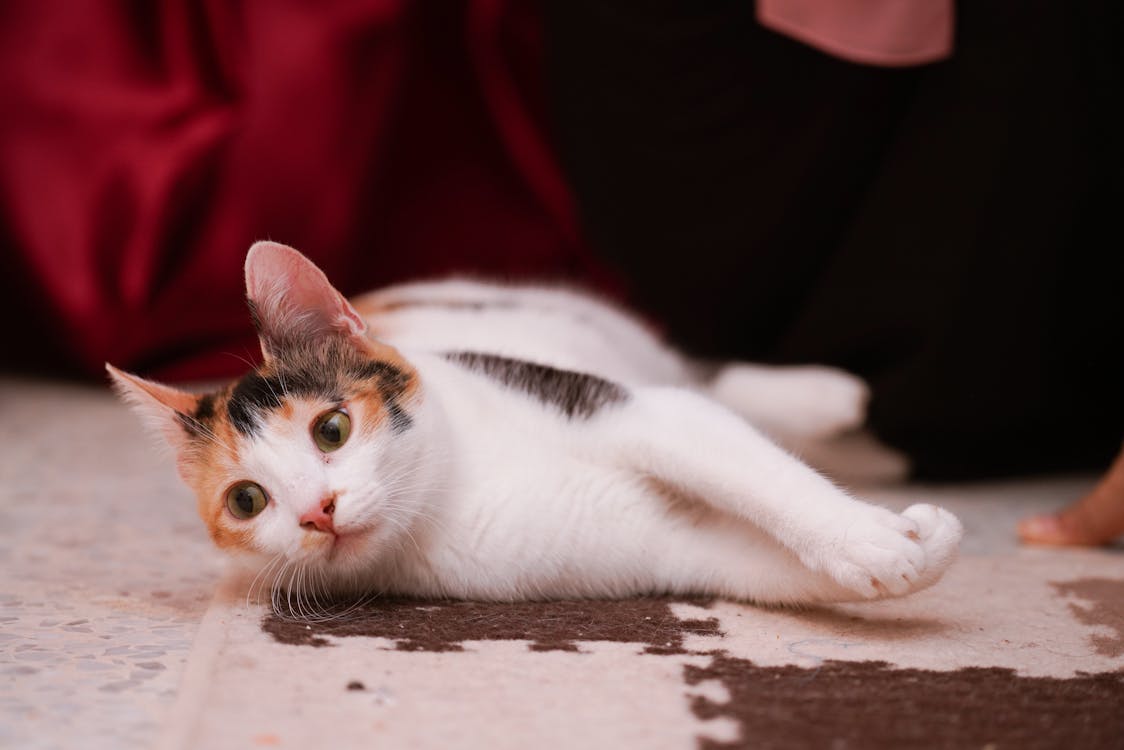
Nurturing Your Cat Back to Health: Post-Vomiting Care
Witnessing your cat vomit can be a distressing experience, but there are steps you can take to help them feel better and recover quickly. Here’s how to nurture your feline friend back to health:
The Importance of Hydration: Keeping Your Cat from Getting Dehydrated
Vomiting can lead to dehydration, which can further worsen your cat’s condition. Here are some ways to ensure your cat stays hydrated:
- Small & Frequent Water Offerings: Instead of offering a large bowl of water that they might shy away from, provide small amounts of fresh, clean water frequently. You can even use a syringe or dropper to gently administer fluids to your cat’s mouth.
- Electrolyte Solutions: Consider offering your cat an electrolyte solution formulated specifically for pets. These solutions can help replenish electrolytes lost through vomiting and diarrhea. Always consult your veterinarian before giving your cat any new supplements or medications.
It’s crucial to monitor your cat’s hydration levels. If they seem excessively lethargic, have dry gums, or aren’t producing urine, contact your veterinarian immediately.
Withholding Food (Briefly): A Gentle Approach to Reintroducing Diet
After a vomiting episode, it’s best to withhold food for a few hours to allow your cat’s stomach to settle. This doesn’t mean they have to go hungry! Offer small amounts of water or clear broth like chicken broth to keep them hydrated.
Gradually Reintroducing a Bland Diet: Easing Your Cat’s Stomach Back to Normal
Once your cat stops vomiting and seems to be feeling a little better, it’s time to slowly reintroduce food. Start with a bland diet that’s gentle on their stomach. Here are some options:
-
- Boiled Chicken and White Rice: Cook boneless, skinless chicken breast in plain white rice. Shred the chicken and mix it with a small amount of cooked rice.
- Baby Food (Pumpkin): Plain pumpkin puree (not pumpkin pie filling) can be a soothing option for cats with upset stomachs. Look for varieties with no added sugar or spices. Offer a small amount on a spoon or mix a teaspoon into their bland food.
Important Note: Only offer small portions of this bland diet every few hours at first. As your cat tolerates this food well, you can gradually increase the portion sizes and frequency of feedings.
Monitoring Recovery: Keeping a Close Eye on Your Cat’s Progress
After your cat has been vomiting, it’s important to monitor their recovery closely. Here’s what to watch out for:
- Appetite: A healthy appetite is a good sign. If your cat continues to refuse food or shows a significant decrease in appetite, consult your veterinarian.
- Energy Levels: Observe your cat’s energy levels. While some lethargy after vomiting is normal, excessive lethargy or weakness can indicate a more serious issue.
- Bowel Movements: Monitor your cat’s bowel movements. During recovery, they might have fewer bowel movements than usual. However, constipation or diarrhea can be signs of complications and require veterinary attention. How AI, ChatGPT maximizes earnings of many people in minutes
By closely monitoring your cat’s recovery, you can identify any potential problems early on and ensure they get the care they need to feel their best again.
Dietary Considerations: Choosing the Right Food for Long-Term Health
Depending on the cause of your cat’s vomiting, your veterinarian might recommend a long-term dietary change. Here are a few possibilities:
- Sensitive Stomach Diet: If your cat has a sensitive stomach, a specially formulated diet designed for sensitive digestion can help prevent future vomiting episodes.
- Hairball Control Formula: If hairballs are a frequent culprit behind your cat’s vomiting, a hairball control formula can help reduce hair accumulation in their digestive system.
Always follow your veterinarian’s recommendations regarding your cat’s diet. They will consider your cat’s individual needs and health history when suggesting the most suitable food option.
Remember, with prompt veterinary attention, proper hydration, a gradual return to a bland diet, and close monitoring, you can help your cat recover from vomiting and get back to their playful, energetic self in no time. Motivation – Mind – Success – Thinking – Productivity – Happiness
Additional Resources:
- The Cornell University College of Veterinary Medicine: https://www.vet.cornell.edu/departments/cornell-feline-health-center/health-information/feline-health-topics
- The American Veterinary Medical Association: https://www.avma.org/
Prevention is Key: Proactive Strategies to Minimize Vomiting
While vomiting can be a cause for concern, there are steps you can take to minimize its occurrence and keep your feline friend feeling their best. Here are some proactive strategies you can implement:
Dietary Management: Fueling Your Cat for Optimal Digestion
Just like humans, cats thrive on a healthy diet that caters to their nutritional needs. Feeding your cat a high-quality diet formulated for their age and activity level can significantly reduce the risk of digestive upset and vomiting. Business – Money Making – Marketing – E-commerce
- Age-Appropriate Nutrition: Kittens have different dietary requirements than adult cats, and senior cats may need special diets to address specific health concerns. Consult your veterinarian to choose the best food for your cat’s life stage.
- Considering Activity Level: Highly active cats burn more calories and require food formulated with more protein and fat to meet their energy demands. Less active cats might benefit from a diet with fewer calories to prevent weight gain and potential digestive issues.
- Reading the Label: Pay attention to the ingredients list on your cat’s food label. Look for high-quality protein sources like chicken, fish, or turkey, and avoid foods with fillers, artificial colors, or artificial flavors.
Following these dietary guidelines can promote healthy digestion and minimize the likelihood of vomiting caused by dietary indiscretion. Health books, guides, exercises, habits, Diets, and more
Regular Brushing: Combating Hairballs, the Fuzzy Foe
Cats are meticulous groomers, and they ingest a significant amount of fur during self-cleaning. This fur can accumulate in their digestive system and eventually lead to hairball formation and vomiting. Regular brushing can significantly reduce the amount of fur your cat ingests, preventing hairball woes.
- Brushing Frequency: The frequency of brushing depends on your cat’s fur length. Longhaired cats generally require daily brushing, while shorthaired cats might benefit from brushing a few times a week.
- The Right Brush: Choose a brush that is appropriate for your cat’s fur type. A slicker brush can be effective for removing loose fur, while a metal comb can help extract mats and tangles.
- Brushing as Bonding Time: Turn brushing into a positive experience for your cat. Offer praise and treats during grooming sessions to create a sense of association and enjoyment.
By incorporating regular brushing into your cat’s care routine, you can help prevent hairball formation and the unpleasant vomiting episodes that often accompany it. Fitness – Meditation – Diet – Weight Loss – Healthy Living – Yoga
Enrichment and Play: A Happy Cat is a Healthy Cat
Stress and anxiety can sometimes manifest as vomiting in cats. Providing your cat with enrichment and engaging playtime can alleviate these negative emotions and contribute to their overall well-being.
- A World of Exploration: Create a stimulating environment for your cat with climbing structures, scratching posts, and hiding spots. Interactive toys that mimic prey movement or puzzle feeders that dispense treats can keep them mentally and physically engaged.
- The Power of Play: Schedule regular play sessions with your cat using toys like wand toys, feather teasers, or laser pointers (used responsibly to avoid frustration). Mimic hunting behaviors tap into your cat’s instincts and provide them with an outlet for exercise and stress relief.
- Cater to Their Purr-sonalities: Observe your cat’s preferences and choose toys and activities they find enjoyable. Some cats love chasing after laser pointers, while others might prefer stalking feathery toys or batting at dangling objects. Cat accessories on Amazon
By enriching your cat’s environment and engaging them in regular playtime, you can help reduce stress-induced vomiting and promote their overall happiness and health.
Addressing Underlying Medical Issues: Working with Your Vet for Long-Term Wellness
If your cat experiences recurrent vomiting, even after implementing these preventative measures, it’s crucial to consult your veterinarian. Vomiting can sometimes be a symptom of an underlying medical condition such as inflammatory bowel disease, kidney disease, or intestinal parasites.
Early diagnosis and treatment of any underlying medical issues can significantly improve your cat’s quality of life and prevent future vomiting episodes. Your veterinarian can perform a thorough examination, run diagnostic tests, and recommend the most appropriate course of treatment for your feline friend. RPM 3.0 – 60% CONVERSION & Money for Affiliate Marketing
Remember, prevention is always better than cure. By implementing these proactive strategies, you can minimize the risk of vomiting in your cat and ensure they live a long, happy, and healthy life.
Final thought: Beyond Morning Sickness: A Holistic Approach to Cat Vomiting
Cat vomiting can have a variety of causes, ranging from simple dietary indiscretion to more complex medical conditions. The key to effectively managing vomiting is accurate diagnosis and appropriate treatment. If your cat does vomit, careful observation of the frequency, duration, and characteristics of the vomit can provide valuable clues to your veterinarian.
As a responsible cat owner, becoming a keen observer of your feline companion’s behavior and habits is essential. Don’t hesitate to seek veterinary care if your cat.
Other Interesting Articles
- How to Tell if Your Cat is in Pain after Surgery: How to Help
- How to Tell If Your Cat Loves You The Most: 23 Signs
- 20 Tips On How to Comfort A Scared and Frightened Cat
- 26 Signs Your Cat Can’t Breathe: A Guide to Help It Recover
- Cat Trilling Sound: What Does It Mean, How To Handle
- Cat Chattering Sound: What Does It Mean, How To Deal With
- How to Take Care of A Kitten 2 Months Old: Tips, Guide
- How to Feed A Newborn Kitten That Won’t Eat: 19 FAQs
- How to Care for Your Cat After Spaying or Neutering
- Cat Excessive Yowling: Why Cats Yowling: What You Can Do?
- How to Regain A Cat’s Trust after Hitting It: 16 Tips to Apply
- How to Tell If My Cat is in Pain after Spaying: How to Help
- How to Help Cats Get Along with Dogs: 17 Beginner’s Tips
- Keep Your Kids and Cats Safe: 15 Effective & Simple Tips
- How to Feed A Newborn Kitten: 30 Essential Tips for Beginners
- Do Cats Have Emotions Like Humans, Dogs? 10 Ways to Feel
- Petting A Scared Cat: 15 FAQs to Comfort A Fearful Cat
- 18 Implied Messages Your Cat Is Sending You With Its Tail
- How to Help Cats Get Along with Each Other: 14 Useful Tips
- 7 Causes of Cat Aggression: Biting, Fighting, Attacking
